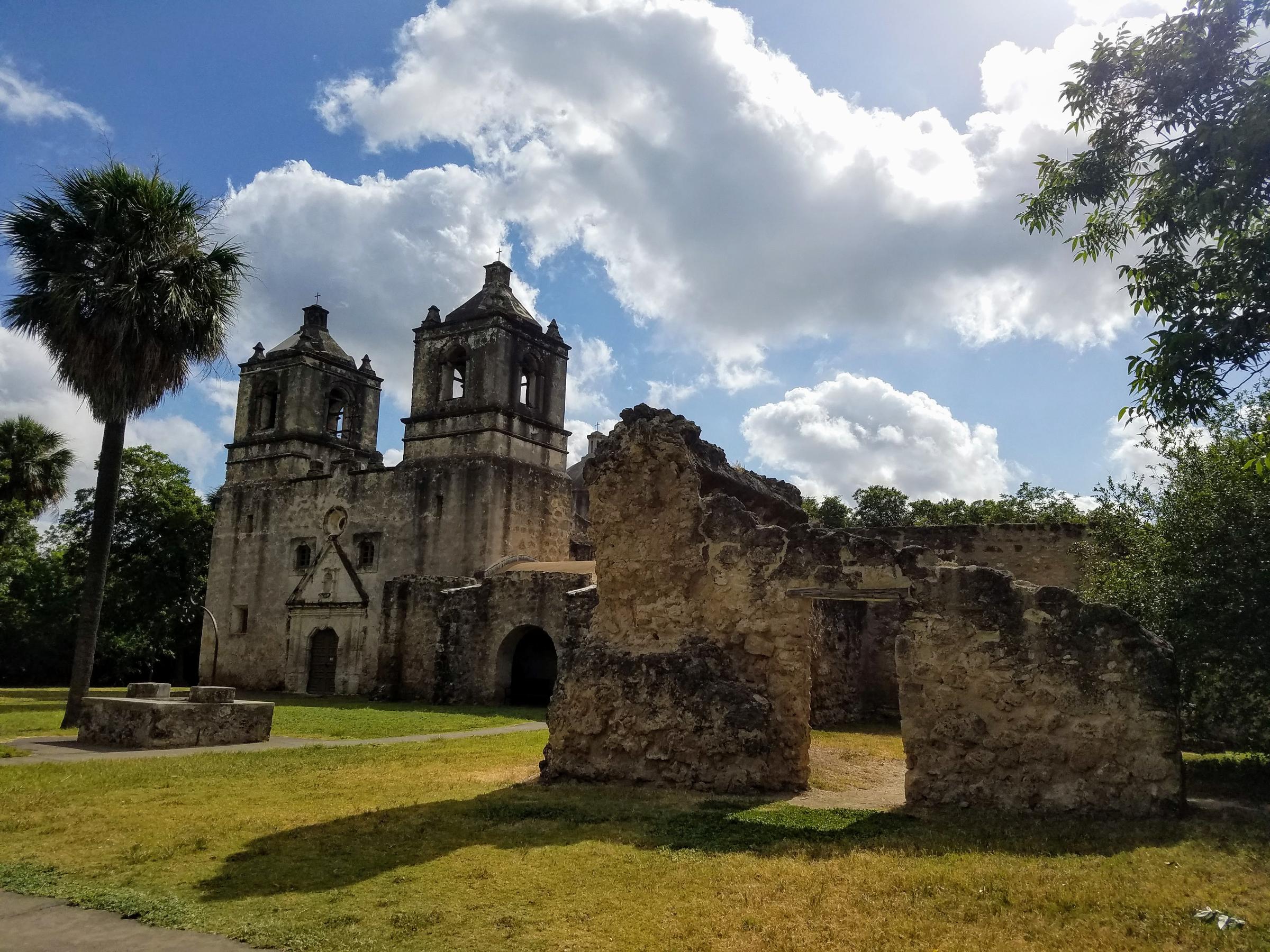Although the Alamo is the most famous, San Antonio has several other must-see Spanish missions that have fascinating history.
The four missions of the National Park Service Mission Trail are an essential party of any history-oriented tour of San Antonio. All four are UNESCO World Heritage Sites. Each is about 300 years old or more, and they were once the center of Spanish governance of the San Antonio region. Today, under an agreement with the Archdiocese of San Antonio, all the missions remain active churches.
The missions are located along the San Antonio River, south of downtown. The trail is officially called the “El Camino Real de los Tejas National Historic Trail.” Take St. Mary’s Street south out of the city, and it will turn into Roosevelt Avenue. Several miles later, on your right, Mission Road leads you to the first complex, Mission Concepción.
This mission was established in 1731. Spanish Catholic missionaries worked here with Native Americans, and converted them to Christianity. In addition to being in the national park, the mission is also listed on the National Historic Landmark register. Some historians consider its stone church the oldest unrestored church in America.
The next stop heading south is Mission San Jose. With a stone-walled perimeter, this is the largest mission in the national park. Mission San José served as a defensive village for Spanish and Native American residents. The walls were for protection from frequent Comanche and Apache raids. Much of the mission was restored in the 1930s by the Works Progress Administration during the Great Depression. It’s also where you’ll find the park’s visitor center.
The third mission is Mission San Juan. It has a water system that’s over 300 years old. It provided residents with drinking water and was a source of irrigation for their gardens. Some of the mission property is still set aside for farming, and the San Antonio Food Bank plants and harvests historical crops there.
The final stop is Mission Espada. It was the first Spanish mission in Texas, founded in 1690. Much of the mission is built out of adobe brick, compared to stone used in other locations.
The Mission Trail runs about eight miles, and can be driven, hiked or biked, although traffic can be an issue on Roosevelt Avenue. San Antonio’s Viva tour bus #40 takes you to all the missions, and runs every half hour. The fare is $2.75, and exact change is needed. Plan to spend at least a half a day on the trail, and consider the ranger-led tour at Mission San José.
Admission to the National Park is free, and there is plenty of free parking at all of the missions.















